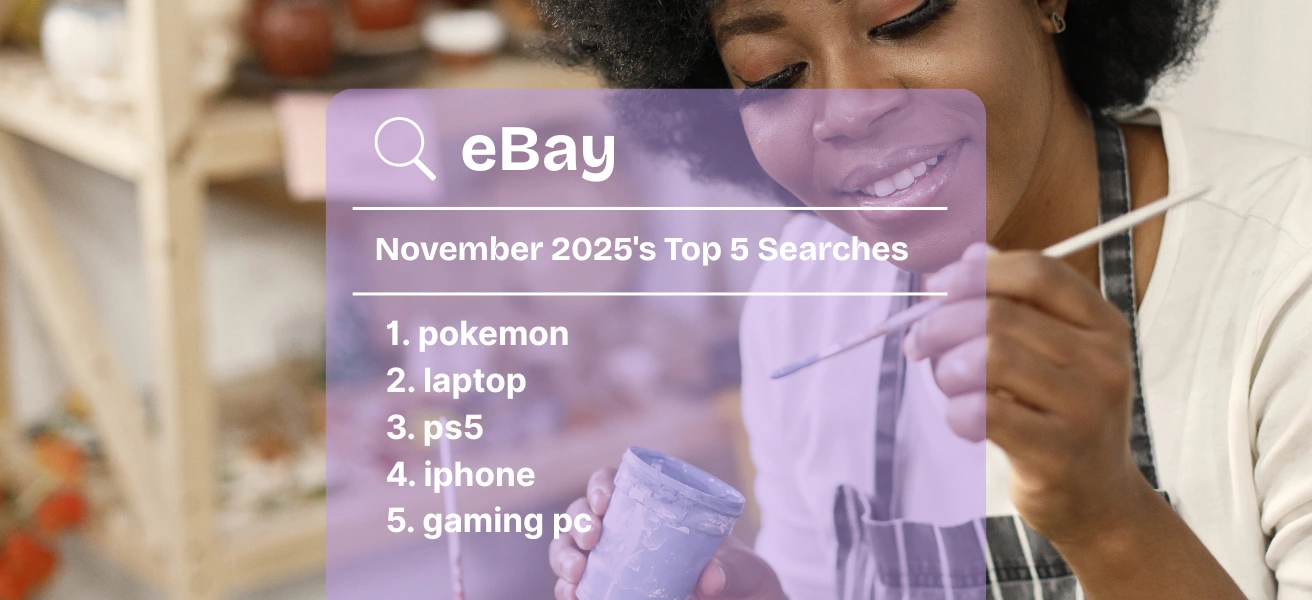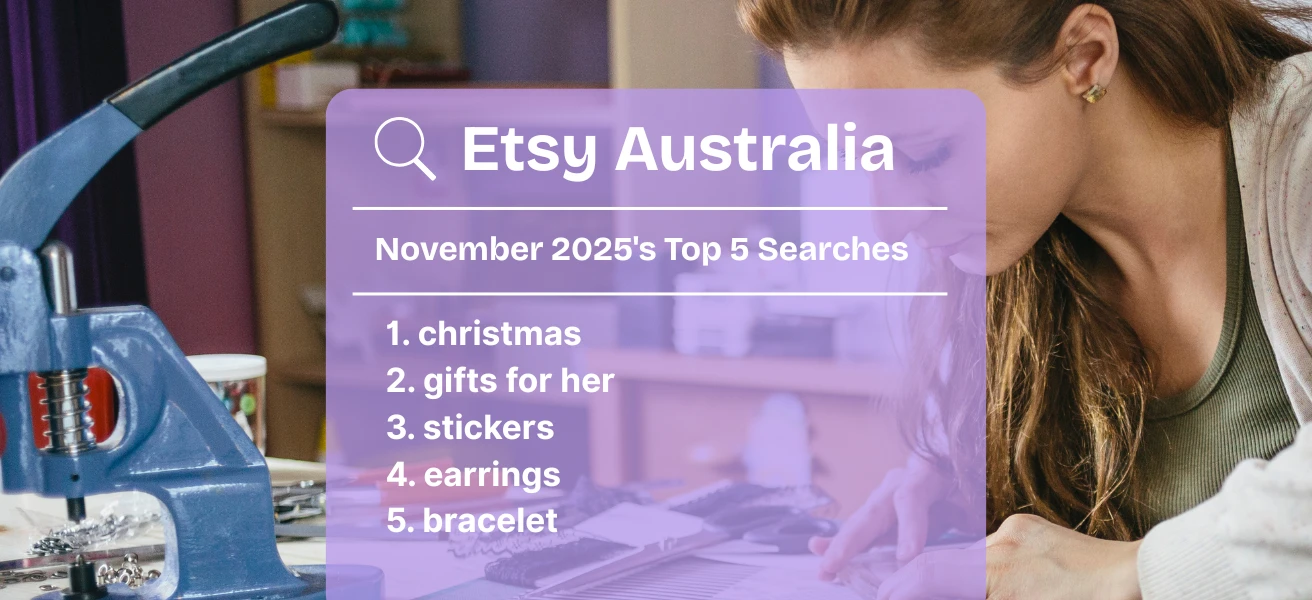Reading time: 9 minutes
Publication date: June 22, 2023
Going by Google search volume, how to price Etsy products is a question many sellers have! So we’ve put our heads together here at eRank to create a guide. We’ve divided the topic into seven factors to help you evaluate your current pricing strategy. We’ve also included a couple of popular formulas.
And of course, there’s eRank’s Profit Calculator to help. It’s available on all eRank plans without quota limits. Because we know how important it is, especially for those of you just starting out, to ensure your costs are covered. Plus make at least a bit of profit!
Setting correct prices for your Etsy products is crucial to growing a successful online business. Pricing your items too high can turn away buyers. Pricing too low means low profits. That’s a given. But if you’re new to Etsy and selling, you may not know that too-low prices have other downsides as well. Prices that are perceived by shoppers as being too low decrease trust in you and your product. And trust in online transactions is a must!
Product and competitor research
To price your Etsy products, first it’s essential to research products like yours that are currently selling well on Etsy. Browsing Etsy shops in your niche is time well spent. And eRank’s Shortcut Button makes this task easy! It’s a button you can add to your browser bar. Then, whenever you’re browsing Etsy and see a shop or listing you’d like to know more about, just click the Shortcut Button. If you’re looking at a shop, it’ll take you straight to a Shop Info analysis. Looking at an Etsy listing? Just a click takes you to a Listing Audit report on its SEO, title, tags, sales, conversion rate, and more – including price!
As you poke around Etsy, take note too of how the product quality, unique features, product photography, presentation, and customer reviews compare with yours. This research will help you better assess your competition and how your product fits into the landscape. (We’ll link a couple of articles on how to research your Etsy competition here at the end, under Resources.)
Another eRank feature that helps you price your Etsy products is in Keyword Tool. To get a sense of price range, first enter a broad search term that describes your product. Then scroll down the page and click the “SERP Analysis” tab. Scroll to the bottom of the page to view that term’s Price Range chart. For this example, we entered “handmade anklet.”

Hovering your cursor over the bars generates a pop-up for each bar like the one shown above. It reports how many current listings using this search term were found in the first 100 results of an Etsy search at that price point. This gives you a feel for what type of price range the market can bear.
Compare like to like
When assessing data results like these, be sure to use products that are comparable to yours in quality. Just because seven of the top 100 listings are selling a handmade anklet for $8 does not mean you should! Theirs may not even be handmade. Or made with the same materials as yours. Or crafted with the same care or artistry. Don’t sell yourself (or your product) short!
Be sure therefore to compare like to like. And if you still can’t compete on price, there are other factors to review before you do anything drastic! (More on that in a bit.)
Factor in costs
Before you can tell whether you are making a profit, you need to know your product’s total cost. Not only what it costs to make. There’s the expense of listing and selling it, as well. And much more to account for!
To price your Etsy products, you’ll need to figure production expenses for each item. Typically, these might include:
- Materials (include time spent finding them! And their ship-to-you cost)
- Labor to make your product (or to procure if it’s Vintage or Supplies)
- Your product photography time
- Photo editing time, especially if it’s painstaking
- Time creating its Etsy listing (including SEO research and writing the description)
- Don’t forget your time on eRank monitoring the product’s performance once listed
- Add a few cents per listing to cover your eRank membership!
On the sales side, calculate the per-unit cost of product packaging (e.g., gift box), and any promotional materials you include. Tot up per-unit shipping and shipping materials (e.g., dunnage, shipping box). Etsy Ads and other ad costs go here. Add the listing renewal cost if applicable.
Then figure fees and taxes. Etsy listing fee; any Offsite Ad fee; transaction fee; payment processing fee. (This is where eRank’s Profit Calculator is your hero!) Once you’ve got that figure, be sure to also account for overhead!
Overhead costs are those not directly related to the production of goods, but necessary for the operation of a business. Examples include rent, utilities, insurance, accounting fees, as well as office supplies and equipment such as water heaters and air conditioning. Your production tools, equipment, electronics are classed as ‘broad-use’ and thus an indirect overhead cost. Take into account all that goes into owning your equipment: depreciation, repairs, maintenance and insurance.
Some common formulas
(Materials + Labor + Overhead) x 2 = Wholesale price.
Wholesale price x 2 = Retail price.
The industry standard for a profit margin is between a 2.2 and 2.5x markup. Here’s an example. A product that cost a maker $100 to produce might be sold to a retailer for $220. Now, on Etsy the maker is most often also the retailer. So you can justifiably mark it up by 2.2x again to arrive at a fair retail price, bringing the final price up to $484.
Two popular pricing strategies
Charm pricing
Pricing strategies are ways that sellers increase profit through influencing customer perception. One is “charm pricing.” Set your prices below a whole number by just a bit. Try $9.99 instead of $10; $29.95 rather than $30; or $99 not $100. Doing so leverages a peculiar but well-known psychological effect. The shopper perceives the price as substantially lower than the actual difference of a penny, nickel, or dollar.
This strategy creates the illusion of greater affordability, better value, even a bargain. And thereby, entices customers to make a purchase, maximizing your sales. It’s surprising how well this “one simple trick” works, despite being fairly well-known! It’s Psychology 101. And still, it works.
Prestige pricing
Another solid strategy to price your Etsy products is “prestige pricing.” Set your prices higher than your competition’s to convey a sense of exclusivity, quality, luxury. This can work especially well on Etsy! A good percentage of shoppers come to Etsy seeking products that are unique, artisanal, high-end. The prestige-pricing model appeals to customers who value quality and are willing to pay a premium for it. And you work less, earn more. As the axiom goes, it’s better to sell one item for $250 than ten for $25.
We urge you to experiment with both of these proven strategies. First though, carefully appraise your product, your target market, and your Etsy competitors. Are you selling supplies, or low-cost handmade items like stickers, or in flooded niches like POD t-shirts? For those, prestige pricing will be harder to pull off. But not impossible! We’ve all seen a bar of soap or candle that sells for a premium price. If you can figure out a way to add perceived value to your offering, go for it. Finding the right balance that aligns with your brand and target audience is crucial for success.
Determine your value proposition
Being “competitive” doesn’t necessarily mean having the lowest price. As mentioned, many shoppers come to Etsy to find something that’s special in some way. And these buyers are willing to pay more for it. To capture these customers, begin by figuring out your item’s unique “value proposition.”
A value proposition is a statement summarizing why a shopper chooses your wares. It communicates the chief ways your customers benefit from giving you their business.
Is your item made from rare, unusual, or high-quality materials? Do you offer personalization? Accept custom commissions? Or perhaps you’ve put a unique, creative spin on a gift item. And it’s already gift-wrapped and ready to ship, appealing to last-minute shoppers.
Whatever benefit you offer, make sure you reach the buyers who seek that benefit. Ensure that your listing conveys value commensurate with your price. Which brings us to our next guidance.
Understand your target market
Knowing who to market to is key to a successful pricing strategy. Visualize your dream buyer. Their style preferences, spending power, and buying behaviors are critical to pricing your items effectively.
Let’s say a typical Etsy buyer is paying $24.95 for a competitor’s item that’s just like yours. Yet your price is $49.95. Then you’d better have a very well-targeted value proposition! Otherwise, your item isn’t going to sell well.
And even with a solid value prop, price still needs to be in the range of what Etsy customers are spending on it. (This is where that Price Range bar chart in Keyword Tool mentioned above comes in handy!)
Test your pricing strategy
Arriving at the right price for your Etsy products is not a one-and-done task. Rather, it requires frequent reassessment to determine whether it needs adjustment. Up or down. This is where testing comes in. Try various price points – but before you make the change, we suggest switching on the Listing Changes tool. (it’s in the main menu underneath the “Listing Optimization” tab). You use this feature to see whether changes you’ve made to a listing (like its price) affect its views, favorites, or sales.
You can also experiment with promotional offers like BOGOs, discounts, or bundling options. (Bundling can help those of you selling stickers and other low-cost items who want to leave the tightest margins behind.) Promos help you gauge customer interest and preferences. So, regularly monitor your sales data and customer feedback to identify patterns.
Tests like these enable you to make informed, data-driven modifications to your pricing. Maintaining a nimble, flexible and adaptive approach to pricing optimizes your shop’s profitability. And customer satisfaction!
Elevate perceived value
As we mentioned, the psychology of pricing is influenced by the perceived value of your products. You can elevate perceived value by emphasizing unique features like artisanship or eco-friendly materials. Use storytelling in your descriptions, your About page, and visually through your images. Doing so helps forge an emotional bond between your customers and your creations. Effective storytelling can justify in shoppers’ minds a higher price.
In summary, it’s true: arriving at the right pricing for your Etsy products is a lot of work! You’ll need a thorough grasp of your costs, niche, and target market. You have to craft pricing that profits by speaking to the right shoppers. Continuously test and refine your strategy to find the perfect balance for your business. Remain open to learning and adapting. Above all, prioritize the delivery of value to your customers.
All this work will be worth it, though! A well-crafted pricing strategy sets your Etsy shop up for growth and success.
RESOURCES
eRank tools mentioned in this article:
eRank blog posts on related topics:
3 Ways to See Etsy Competitor Tags, Keywords and SEO








